Mesarthim, designated as Gamma Arietis, is a binary star situated in the northern constellation of Aries. This binary star system is the fourth brightest object in the zodiacal constellation of Aries.
Key Facts & Summary
- Mesarthim is located at around 164 light-years / 50 parsecs away from the Sun.
- The two components that make up the Gamma Arietis star system are designated as Gamma Arietis A and Gamma Arietis B.
- The primary component, Gamma Arietis A, is formally named Mesarthim.
- The two combined apparent visual magnitude of the two stars is 3.86.
- The primary star, Mesarthim, has an apparent magnitude of 4.58, while the secondary star, Gamma Arietis B, has an apparent magnitude of 4.64.
- The double star nature of this system was discovered as early as 1664, by English scientist Robert Hooke.
- The two components of the star system have an angular separation of 7.606 arcseconds, which can be resolved with a small telescope.
- The orbital period of the two stars is greater than 5000 years.
- Mesarthim is a B-type main-sequence star of spectral type B9 V.
- The brighter component, Gamma Arietis B, is a Lambda Boötis – chemically peculiar star of spectral type A1p Si.
- Gamma Arietis B is also classified as an a2 CVn variable star – its brightness varies by 0.04 magnitudes within a period of 2.61 days.
- Gamma Arietis has a radial velocity of +3.7 km / 2.2 mi per second.
- Mesarthim is bigger than our Sun, having 1.9 solar radii. The star has a rotational velocity of around 54 km / 33.5 mi per second.
- Gamma Arietis B, on the other hand, is a fast spinner, having a rotational velocity of around 201 km / 124.8 mi per second.
- Gamma Arietis B is hotter than our Sun, having average surface temperatures of around 10,970 K.
- The surface gravity on Gamma Arietis B has been estimated to be at around 4.25 cgs.
γ Arietis
The star’s name, Mesarthim, translates to “servants”, from Hebrew. However, the name has the same origin as Sheratan. Gamma Arietis shared the name Sheratan with the brighter Beta Arietis.
Sheratan is derived from Arabic, and it translates to “the two signs”. It is a reference to the stars once having marked the northern vernal equinox.
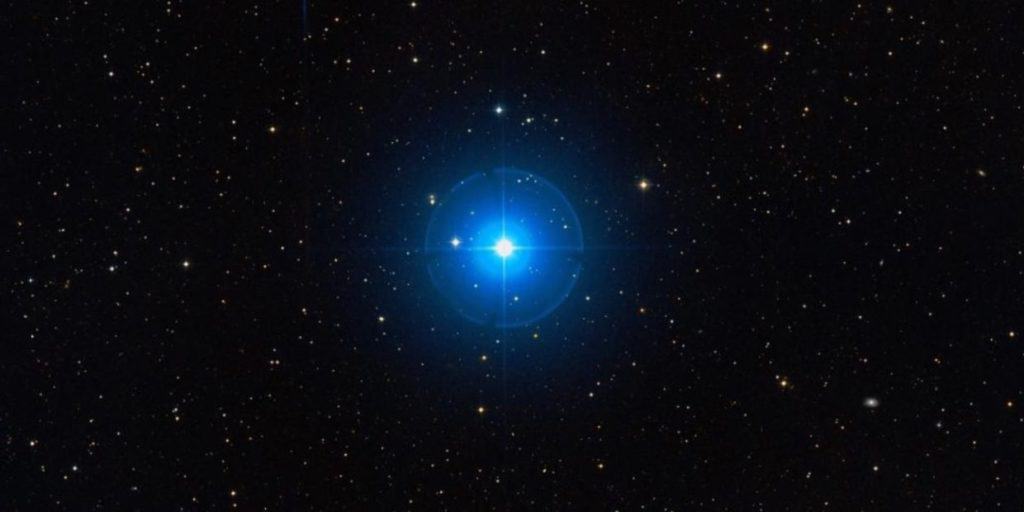
The name got corrupted to Sartai in medieval texts and the German uranographer Johann Bayer mistook this for the Hebrew word for “servants”. The name was picked up by later scholars, while Beta Arietis kept the name Sheratan.
Formation
Mesarthim formed several millions of years ago from an interstellar medium of dust and gas. Gravity pulled the swirling gas and dust together and formed one of the brightest stars of the zodiacal constellation of Aries, Mesarthim.
Mesarthim’s exact age is unknown, and its companion star is also shrouded in mistery in regards to its age.
Distance, Size, and Mass
Mesarthim is located at around 164 light-years / 50 parsecs away from the Sun. The star system is readily visible with the naked eye under the right conditions.
Mesarthim has 1.9 solar radii or 190% of our Sun’s radius. Its mass is probably greater as well, though it currently remains unknown. Mesarthim is around 3 times bigger than our Sun.
The companion star, Gamma Arietis B, is also probably bigger and more massive than our Sun. Its physical characteristics remain currently unknown.
Other Characteristics
Gamma Arietis is a white star of spectral type A1pSi, which is also classified as a subgiant of the spectral type B9.5IV – indicating that it may have started to evolve away from the main sequence.
Mesarthim is classified as a Lambda Boötis star, which is a chemically peculiar type of star with a low surface abundance of iron peak elements.
It is also classified as an Alpha2 Canum Venaticorum variable, a chemically peculiar star still on the main sequence, belonging to the spectral class B8p to A7p – having a strong magnetic field and an overabundance of certain elements.
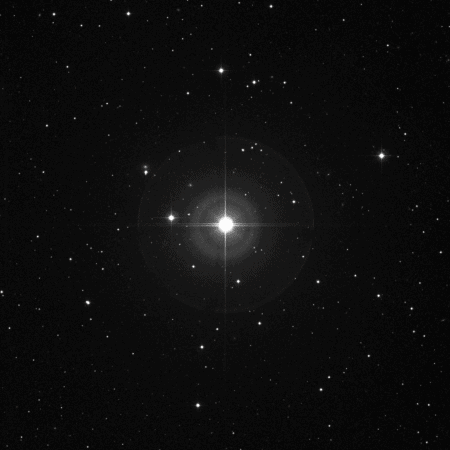
Mesarthim also has particularly strong lines of silicon. The star’s magnetic field is 1,000 times stronger than our Earth’s, and the magnetism produces enormous starspots that cause variations in brightness as the star rotates.
The star shows brightness variations of 0.04 magnitudes over a period of 2.61 days. It is a fast spinning-star having a rotational velocity of around 201 km / 124.8 mi per second.
Mesarthim is also hotter than our Sun, having average surface temperatures of around 10,970 K, being 1.8 times hotter. The other star is a main-sequence star of spectral type B9 V, it is the hotter of the pair having temperatures of around 11,000 K.
Stellar System
Though the Gamma Arietis star system appears as a single star to the naked eye, it consists of two stars that can be resolved through small telescopes.
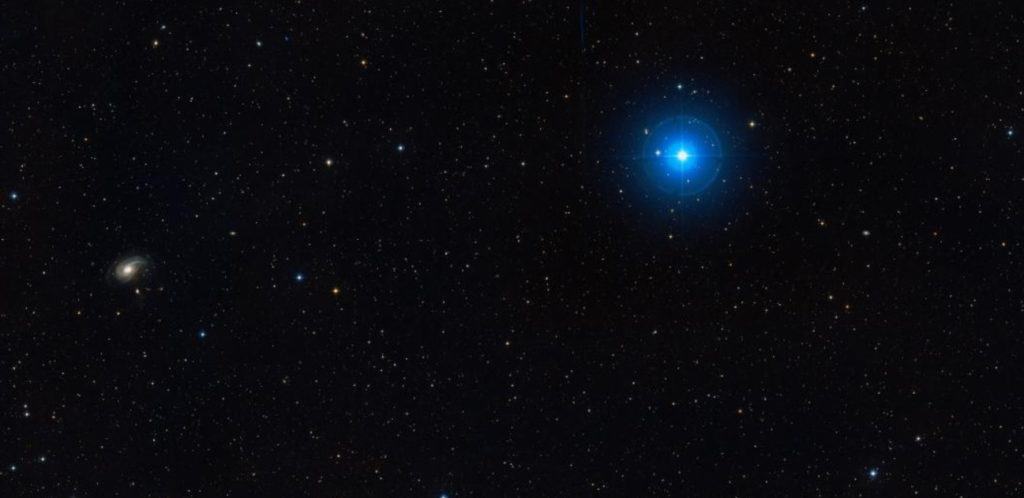
The two stars, Gamma Arietis A and B are separated by around 7.606 arcseconds, and they orbit each other once every 5,000 years or more.
Location
Mesarthim / Gamma Arietis is located in the zodiacal constellation of Aries, the celestial ram. Mesarthim is the fourth brightest star in the constellation after Hamal, Sheratan, and Bharani. Mesarthim marks one of the celestial ram’s horns, while Sheratan marks the other.
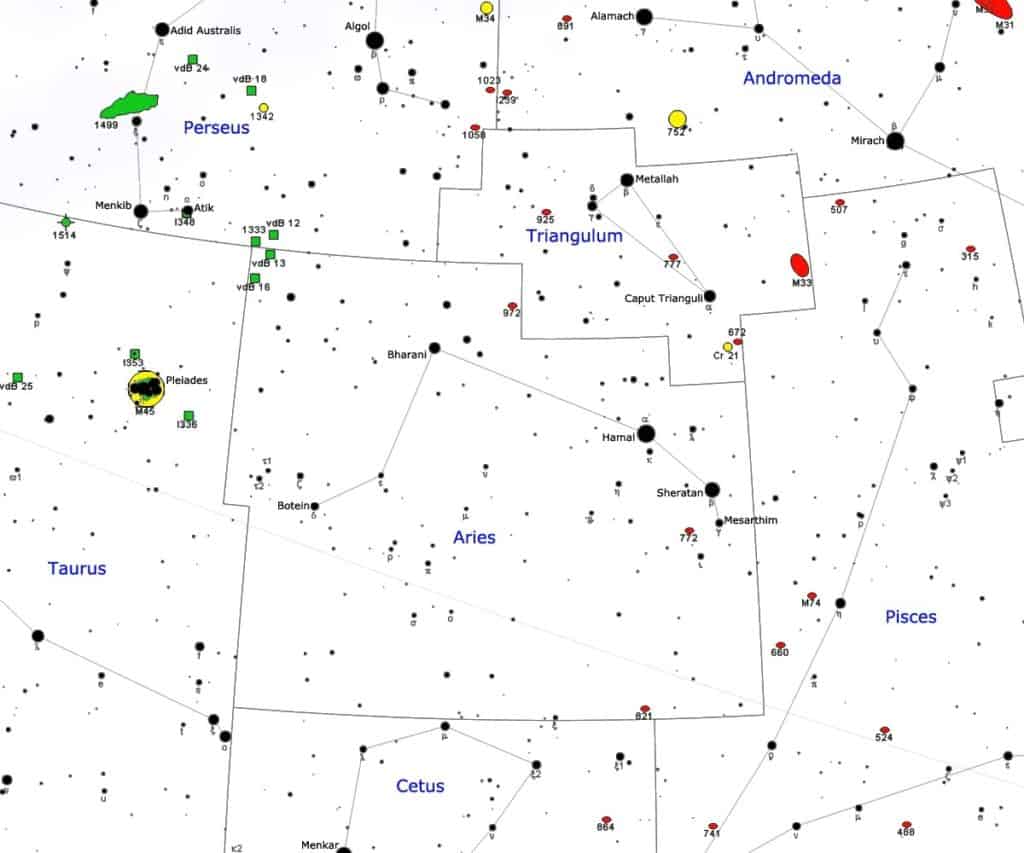
The zodiacal constellation of Aries stretches across 441 square degrees of the northern sky near the more conspicuous Taurus and Perseus constellations.
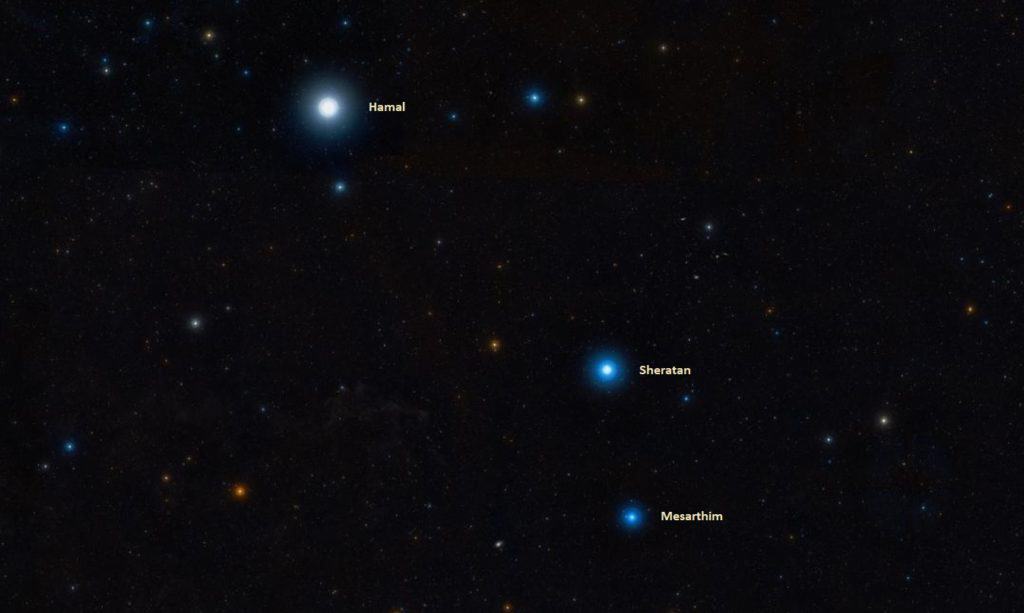
Like the other zodiacal constellations, Aries was first listed by the astronomer Ptolemy of Alexandria in the 2nd century CE. Mesarthim forms a triangle asterism with the brighter Hamal and Sheratan.
Mesarthim can be used to locate the bright unbarred spiral galaxy NGC 772, which is twice the size of our Milky Way galaxy, located at around 130 million light-years. This galaxy lies to the east of Mesarthim.
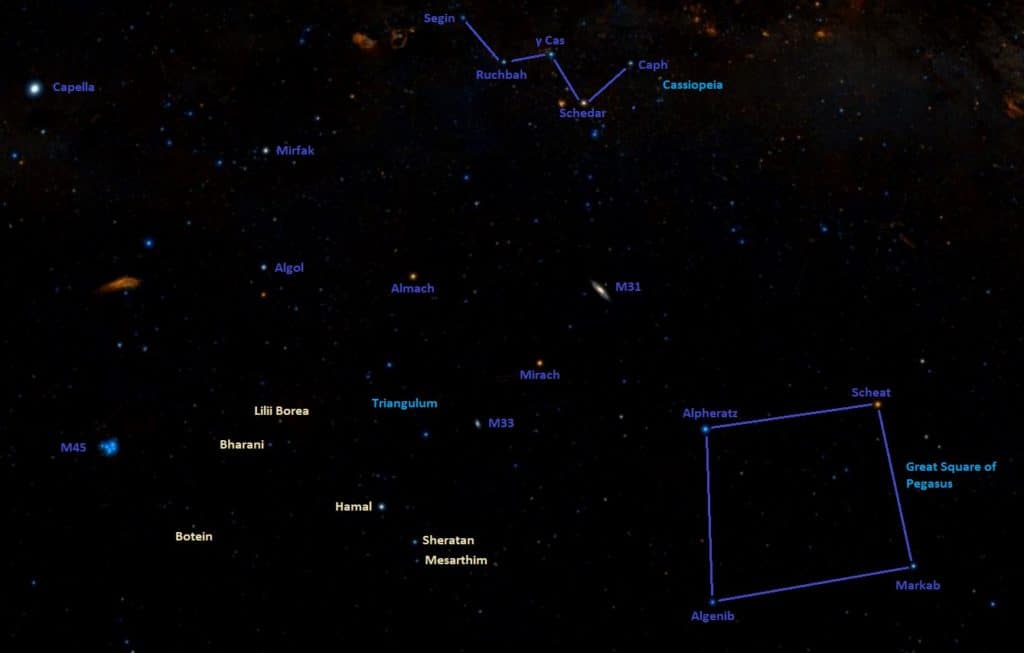
The constellation of Aries is a relatively inconspicuous constellation, with its brightest star, Hamal, shining at magnitude 2.00. However, Aries hosts several interesting deep sky objects.
These include the spiral galaxy NGC 772, the NGC Group of galaxies near Sheratan, the colliding pair of galaxies NGC 935, and IC 1801, the elliptical galaxies NGC 720 and NGC 821, and the dwarf irregular galaxy NGC 1156. The best time to observe the stars and deep-sky objects of Aries is during the month of December.
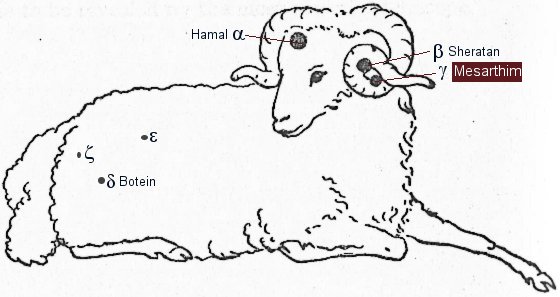
Did you know?
- The Chinese know Mesarthim as the Second Star of Bond. The Chinese Bond asterism is formed by Mesarthim, Sheratan, and Hamal, and it is one of the seven mansions of the White Tiger, marking the tiger’s body.
- In Hindu astronomy, Mesarthim and Sheratan are associated with Ashvins, the twin Vedic deities of medicine.
- Robert Hooke discovered the binary nature of Mesarthim while searching for a comet.
- Many thousands of years ago Mesarthim was the nearest visible star to the vernal equinox, the point where the Sun’s apparent path across the sky crosses the celestial equator from south to north, marking the beginning of spring in the northern hemisphere.
- Mesarthim was known as the First Star in Aries, and the equinox as the First Point of Aries.
Sources:
Image Sources:
- https://www.star-facts.com/wp-content/uploads/2020/03/Mesarthim-1240×620.jpg?189db0&189db0
- https://in-the-sky.org/image.php?style=medium&userimg=19910715_115913_8d2ebd0f25ae.png
- https://www.star-facts.com/wp-content/uploads/2020/03/Mesarthim-and-NGC-772.jpg?189db0&189db0
- https://www.star-facts.com/wp-content/uploads/2020/02/Aries-constellation.jpg?189db0&189db0
- https://www.star-facts.com/wp-content/uploads/2020/02/Hamal-Sheratan-and-Mesarthim.jpg?189db0&189db0
- https://www.star-facts.com/wp-content/uploads/2020/03/Mesarthim-location.jpg?189db0&189db0
- https://www.constellationsofwords.com/images/stars/mesarthim.JPG
